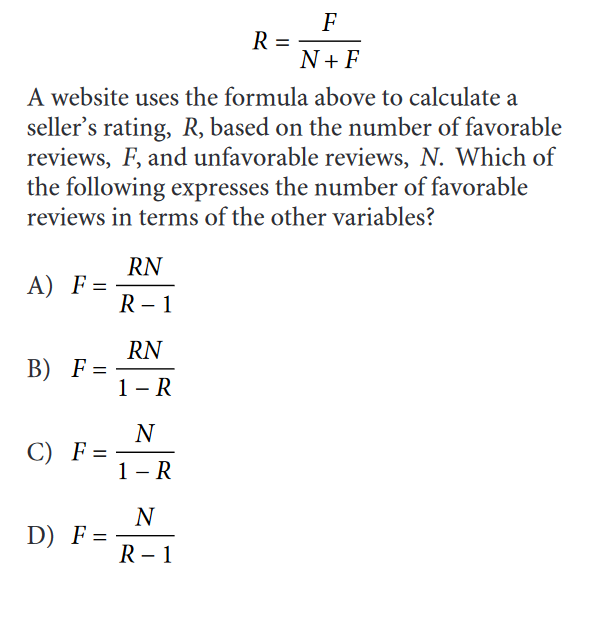25 Tips and Tricks for the SAT
The SAT remains an important aspect for most college admissions processes. Schools use it as one factor to determine a student’s college readiness, and it can even help students qualify for merit scholarships. There are a lot of reasons why you should do your best on this test, so we’ve compiled some of our expert advice to help you improve your score. Most students take the SAT in their junior and senior year of high school, but you can start preparing for it earlier than that. Although they aren’t the exact same test, preparing for the PSAT can go a long way in helping you be more prepared for the SAT. Generally speaking, we suggest that students take the SAT as early as possible in their junior year. That way, you can compare your score to the average scores of admitted students on your college list and see if you want to retake the test to improve your score. Whether you’ve never taken the SAT or you’re planning to retake it, you should definitely spend some time preparing for the test. But how much time should you spend? The answer, although you may not like it, is that it depends. There is no wrong amount of time to spend preparing for the SAT. Some students spend months, while others cram their studying in to a couple of weeks. To gauge how long you need, it’s a good idea to take a free practice test available from the College Board and score it. Compare your scores—the total score and your section scores—to the scores of the schools you plan on applying to. The lower your score is compared to the school scores, the more time you should allot for studying and preparing. Of course, strategy matters when it comes to making the most of your test prep. That’s why we’ve included a few tips and tricks to help you get started. There are some tips that apply to the SAT as a whole. These have to do with your approach to the test and how you study in general. Some students think that if they experience any test anxiety, then they are doomed to a poor test performance. But it’s normal to experience some level of anxiety. Anxiety is a part of the fight-or-flight response which allows you to focus and think more quickly—both good for a testing situation. Instead of trying to get rid of your anxiety, keep a more balanced approach; don’t let the anxiety get to the point of panic, but there’s also no need to overly control your emotions. For more advice about how to manage your test anxiety, check out our post 10 Ways to Overcome Test Taking Anxiety The Reading Test, Writing and Language Test, and the two parts of the Math Test each have their nuances. While some strategies overlap across tests, you also want to develop ones that are unique for each section. Maybe you struggle with motivation when you reach the last section, which is the Math Test, or maybe you have trouble gearing up to start the test with Reading. We’ll give some specific advice in the sections below. This is my favorite strategy, but it takes some practice to get used to. In order to build up your confidence and avoid any test panics, answer all of the easy questions first, and then go back to answer increasingly difficult questions. Decide quickly, after reading a question, whether you will solve it or skip it. You’ll find that when you go back to take on “hard” questions, some of them will be easier because you’ve warmed up through the easy questions. You should have some idea of what kind of a score you’d like to achieve before you start studying. But beyond that, use the free SAT practice test scoring guides to give you even greater insight. For example, if you’re aiming for a 650 on the SAT Math, you’ll need to get around 41 questions right out of 58. This can help you prioritize which questions you answer (with Tip #3) to make sure you get to at least 41 that you actually attempted and are confident in your choice. If you’re like most students at the start of their test prep journey, then you have a lot of different areas you could improve in. However, you’re better off zeroing in on a few key concepts and mastering them, rather than trying to hit a little bit of everything. By progressing through concepts one at a time, you’ll see more improvements in your score than if you spread your efforts thin. Some of these tips overlap with the Writing and Language Test, but for the most part they are especially applicable to the Reading Test. While I don’t mean this literally, I do mean that you should do the passages out of order. It’ll take some practice for you to figure out the best order based on subject and skimming for complex language, but it’s important that you do the passages in the order you want. The Reading Test is the first test on the SAT, so starting this test strong can set the tone for your entire testing experience. Note: while I suggested doing the questions out of order in #3, you should complete all of the questions regarding a passage before moving on to the next set of questions in the Reading and Writing & Language test. The SAT includes a one- or two-sentence introduction before each passage in italics. These introductions often tell you who wrote the passage, when it was written, and where the passage comes from. This contextual information can help you make sense of the passage and more easily answer author-based questions. It also is the biggest key in deciding which passage to attempt first. Just as you would solve the Math Test questions and find the answer that best fits your own, you should come up with your own answer for the Reading Test questions before looking at the choices. As practice, you may want to do a sample Reading Test untimed to write your own answers to questions and then choose the answer choice based on which is closest to your own. While you may be stumped on some questions (which is totally normal!) this can help you avoid any confusion from long, partially-true answer choices. A little less than half of the SAT Reading Test questions fall under a category the College Board calls “Rhetoric,” which has to do with the structure and development of the passage rather than the ideas and information. These questions should be approached differently, since many ask about the role that different literary elements play, or about the author’s choices. Instead of working with the ideas in the passage, think about how the writing accomplishes the author’s purpose. To answer most of the Reading Test questions, you should refer back to the passage rather than relying on your memory of the passage itself. There’s no need to base your answers entirely on memory, since this portion of the SAT is structured like an open-book test. In fact, if you do this along with answering the questions from easiest to hardest, then you’ll actually develop a deeper understanding of the passage relatively quickly and feel more confident answering those tough questions. These tips really focus on pitfalls students make on the Writing & Language Test. Working on this and the Reading Test will boost your Evidence-Based Reading and Writing section score. The Writing & Language Test doesn’t just test your knowledge of grammar, but it makes up a big portion of it. The Standard English Conventions subscore is based on 20 out of 44 questions, or about 5 questions per passage, and I find it is the easier of the two subscores to work on. There are plenty of short books available at public libraries, or you can find grammar lessons online. This is a broad tip, so I’ve included some of the common errors below. Errors in subject-verb or pronoun-antecedent agreement are difficult for students to catch. Often, the sentence separates the two related parts using prepositional phrases, parentheticals, or appositives. If there is a pronoun or a verb in the underlined portion, find the antecedent or subject it corresponds to and makes sure it matches. For example: When any one of these changes occur, it is likely the result of careful analysis conducted by transportation planners. The verb “occur” corresponds to the subject “one”, so it should be changed to “occurs.” The pronoun “it” has the antecedent “one,” so this agrees and should be left alone. Some students would be tempted to choose an answer with “they are” instead of “it is” because the noun “changes” is closer to the pronoun and is plural, but pay attention to the meaning of the sentence. Many students are uncomfortable with commas and other types of in-sentence punctuation like dashes, semi-colon, colons, and parentheses. If you find yourself in this situation, learn when you can use each type of punctuation and when you can’t. Many of these are interchangeable, and depend on the meaning that the author wants to convey or their style. Just know that the SAT won’t give you a question where all of the punctuation marks are interchangeable—either one of those is right, or the correct choice is no punctuation in the underlined portion. The passages on the Writing & Language Test are unfinished drafts, and they each have a different intended audience or level of formality. While very formal English is appropriate for highly academic texts, casual writing often “breaks” some grammar rules, such as starting sentences with prepositions or including sentence fragments. Don’t assume that the very formal or “fancy” answer is the right one for each question, since each part should fit into the whole. Speaking of a passage’s style, you should consider the passage as a whole. Many students only look at the particular sentence for each question, and maybe the sentences surrounding it before deciding their answer. However, if you do this, you may miss out on the bigger picture and have difficulty answering questions about whether sentences should be included or omitted, or how a passage can be restructured to strengthen it. If you have the time, try reading the passage once quickly to get the gist before answering the questions. Many of these tips also apply to the Math with Calculator portion, but because they greatly improve your performance on the no-calculator portion, I’ve included them here. On this particular section, knowing “math facts” can help you solve questions more quickly and efficiently, especially since you’ll likely be using at least some pencil and paper to find answers. Some of the facts I recommend students review and brush up include exponent rules and the common squares and cubes of numbers. We’ve dedicated a whole post to 30 SAT Math Formulas You Need to Know to help you out. This one is especially important for students who are used to solving every question with a calculator. Calculators allow you to easily work with decimals, so many of the no-calculator questions use fractions specifically. You should feel comfortable rewriting fractions, finding least common denominators, and how to divide fractions. Along the same lines as fractions, many questions don’t give explicit values but instead use only variables, or they use values that are often treated like variables such as pi or e (Euler’s number). You may need to rewrite equations or inequalities in terms of another variable, or understand how changing a variable would alter the result of the equation. Algebra is a huge portion of both the no-calculator and calculator section, so it’s in your best interest to know how to do math with variables. While some SAT variable questions require you to work with the variables as variables, you can sometimes substitute numbers to help you find the answer when you are truly stuck. For example, consider question 12 from SAT practice test 2 below: You can manipulate the equation using algebra to find the solution, or you can replace R, N, and F with numbers that satisfy the first equation. I’m going to replace F with 2 and N with 3, which gives me an R of 2/5. Plugging 2, 3, and 2/5 into the answer choices, I find that B is the only answer choice where the equation is true, and that is the right answer. Make sure to choose single-digit numbers or numbers like 10. Avoid choosing 1, since 1 has special mathematical properties that can lead you with two “correct” answers. Many of SAT problems involve equations, but word problems tend to deal with inequalities rather than equations. Phrases like “at most” or “at least” tip you off that you’re dealing with an inequality, and you need to see if the end of the range is included in the answer as defined in the problem. For example, if the question states that a value can be “no more than” a certain number, then you need to choose the next lowest number, rather than the number that would yield an equality. Of the two parts to the Math Test, students tend to feel more confident when they get to this section. Here’s how you can make the most of it. Virtually every question in this section can be solved without a calculator. I recommend that you try solving as many questions as you can on your own before you bust out the calculator to figure out the remaining questions. As with many of the tips, you should practice this untimed so you can see how much you solve without a calculator. Not only does it sharpen your mathematical thinking overall, but it helps boost your confidence for the no-calculator section. This is a tried-and-true test-taking method, and because it works, we mention it here. This type of strategy should be used only when you think it is the fastest way to solve a problem (calculators make short work of this, but see Tip #21), or when you have no other idea how to solve the problem. More than ratios or rates or its related concepts, percents trip students (and adults) up. Most of this has to do with the fact that you need to convert percents to decimals and then back to percents, which can lead to careless errors. Some students also, in their speed, lump percent increases and decreases together, which does not work. If a problem says that a lamp is discounted at 40% and then a customer has a 10% off coupon, the lamp is not 50% off. Instead, you apply the 40% discount first to get your new value, and then 10% of the new value is discounted with the coupon. Take each percent increase and decrease one step at a time, being careful to do the percent of the new value at each step. The calculator portion of the SAT includes questions that have to do with statistics, but many of these don’t require explicit calculation of any kind. Instead, these test your reasoning skills as it applies to statistical concepts, such as sampling techniques, margin of error, standard deviation, and reasonable conclusions that can be drawn. These problems tend to pack a lot of information into a few short sentences, so pay attention to what is and isn’t included. Although circles, their graphs, and their equations are part of the more advanced topics covered on the SAT, there is usually at least one question on the SAT that deals with circles. You should be able to recognize and interpret the equation of a circle and rewrite the equation into different forms. If you want a top score, then this is a must. We hope that this has given you a great starting point for your test prep endeavors. While you can certainly improve your score on your own, it’s much easier to do it when you work with an expert who can give you personalized guidance. Preparing for the SAT? Download our free guide with our top 8 tips for mastering the SAT. Want to know how your SAT score impacts your chances of acceptance to your dream schools? Our free Chancing Engine will not only help you predict your odds, but also let you know how you stack up against other applicants, and which aspects of your profile to improve. Sign up for your free CollegeVine account today to gain access to our Chancing Engine and get a jumpstart on your college strategy! For more information about the SAT, check out these posts: What Does the Math Section of the SAT Test? How to Get a Perfect Score on the SAT Essay What is a Good, Bad, and Excellent SAT Score? Here’s How to Think About It.
When Should Students Prepare for the SAT?
General Tips
1. Some anxiety is normal.
2. Have a plan for each section.
3. Don’t do the questions in order.
4. Know what it takes to achieve your goals.
5. Don’t study everything at once.
Reading Test
6. Reorder the passages.
7. Read the passage introductions.
8. Come up with your own answer.
9. Identify the “rhetoric” questions.
10. Refer back to the passage.
Writing & Language Test
11. Brush up on grammar.
12. Watch out for agreement.
13. Commas and in-sentence punctuation.
14. Figure out the style.
15. Consider the whole passage.
Math Test, No Calculator
16. Memorize key facts.
17. Review working with fractions.
18. Get comfortable with variables.
19. Use easy numbers.
20. Don’t confuse equations and inequalities.
Math Test, with Calculator
21. Don’t overuse your calculator.
22. Plug and chug.
23. Slow down with percents.
24. Not all questions require “math.”
25. Familiarize yourself with circles.
Wrapping it Up





